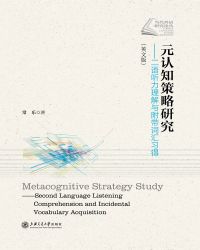5.3.2 Results for Incidental Vocabulary Acquisition
您可以在百度里搜索“元认知策略研究:二语听力理解与附带词汇习得(英文版) 艾草文学(www.321553.xyz)”查找最新章节!
5.3.2 Results for Incidental Vocabulary Acquisition
The descriptive statistics for vocabulary posttests from the two listening cycles are shown separately in Table 42 and Table 46. Scores are presented for each instructional group and each vocabulary sub-test (i. e. production, form and reception), and also for both the immediate and delayed posttests of each listening cycle.
Twenty words (10 words for each listening cycle) were originally designated as potential target items of the study. It was anticipated that the participants would not know these target words initially. To establish this was in fact the case, a vocabulary pre-test was administrated before Cycle 1 listening commenced. All the participants were asked to self-report their knowledge on 40 English words which included the 20 target words, some distracter words and a number of basic words likely to be already known by the participants. Results of the self-reports showed that two designated words in Cycle 1 were already known by more than 20% of the participants and thus were eliminated from the dataset, and thus reduced the total target number of words for Cycle 1 from 10 to 8. However, the total number of target words for Cycle 2 remained 10. For the sake of inter-cycle comparison, both raw scores and percentages are shown in Tables 42 and 46.
Table 42 Descriptive Statistics for Vocabulary Posttests of Cycle 1
Note. Group A=listening one time; Group B=listening three times; Group C=schema raising+listening three times; Group D=inferencing training+listening three times; M=mean; SD=standard deviation.
As can be seen from Table 42, the maximum mean score for Cycle 1 was 8 (i. e.100% correct). The range in scores was considerable (0-8/0-100%) and the groups varied in the mean scores for different sub-tests (0-4.4/0-55%), indicating substantial variance in the sample as a whole. Also, all the means of the different sub-tests for Groups B, C, and D were clearly higher than those of Group A.
In Cycle 1, ANOVA realized a statistically significant difference among the four groups in all the Immediate Tests (Production Test, df=3, F=2.979, p<.05; Form Test, df=3, F=3.774, p<.05, and Reception Test, df=3, F=2.662, p=.05, see Table 3 in Appendix E for the ANOVA table of vocabulary acquisition under different listening conditions in Cycle 1). Post hoc Scheffe tests (as shown in Tables 43, 44 and 45) found Group A scored significantly lower than Group D in the Form Test (p=.025), and there was a strong tendency toward significance for the difference between Group A and Group D in the Production Test (p=.054). Nevertheless, the differences among the other groups were not statistically significant (see Tables 4, 5 and 6 in Appendix E for the full tables of Scheffe tests of Production, Form and Reception Test Scores in Cycle 1).
Table 43 Scheffe Test of Production Test Scores in Cycle 1
Table 44 Scheffe Test of Form Test Scores in Cycle 1
Table 45 Scheffe Test of Reception Test Scores in Cycle 1
Table 46 Descriptive Statistics for Vocabulary Posttests of Cycle 2
As shown in Table 46, the maximum mean score for Cycle 2 is 9 out of a total of 10. The range in scores was considerable (0-9/0-90%) and the groups varied in mean scores for the different sub-tests (0-3.95/0-39.49%), which, as in Cycle 1, indicates substantial variance in the sample as a whole.
In Cycle 2, ANOVA realized statistically significant differences among the four groups in the Immediate Form and Reception Tests (Form Test, df=3, F=2.814, p<.05, and Reception Test, df=3, F=2.676, p<.05, see Table 7 in Appendix E for the ANOVA table of vocabulary acquisition under different listening conditions in Cycle 2). However, in the post hoc Scheffe tests (as shown in Tables 47 and 48) no difference between any two groups was found to be statistically significant (see Tables 8, 9 and 10 in Appendix E for the full tables of Scheffe tests of Production, Form and Reception Test Scores in Cycle 2).
Table 47 Scheffe Test of Form Test Scores in Cycle 2
Table 48 Scheffe Test of Reception Test Scores in Cycle 2 元认知策略研究:二语听力理解与附带词汇习得(英文版)
